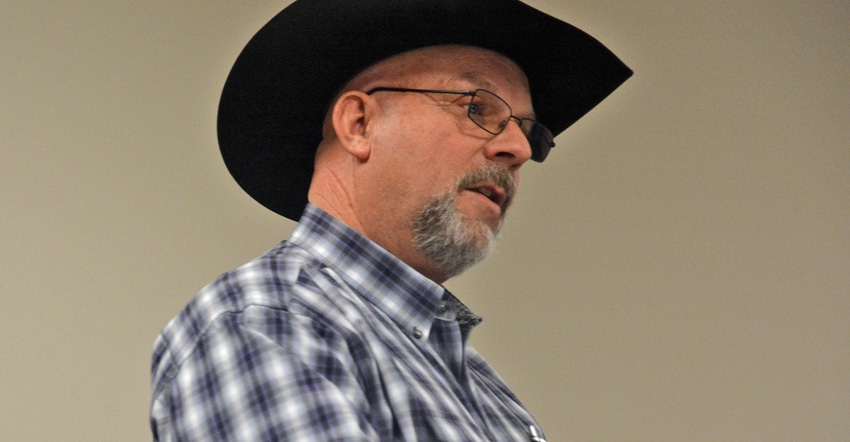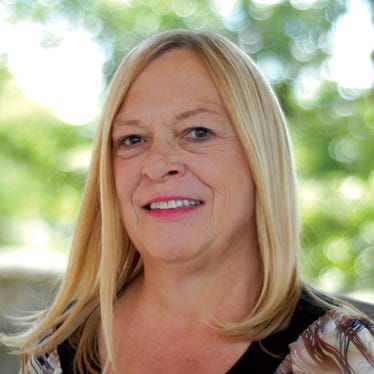
Proponents of regenerative agriculture say changing the way we farm could provide a big part of the solution to flooding, one of the most destructive and costly of the natural disasters that producers face. Regenerative ag utilizes farming practices that promote soil health through no-till, diverse cover crops and integration of livestock.
The farmers who are part of Cheney Lake Watershed, Inc. have been adopting some — or most — of those practices for the last 20 years or more and they are excited to be part of a General Mills pilot project that aims to help them learn what more they can do and how it can benefit the lake they love while also improving the health of their soils, the yield of the crops and the size of their bank account.
Twenty-four of those farmers are part of the GM pilot project, but they are only a handful of the crowds that show up for the regular workshops that are offered to Cheney Watershed members.
Importance of regenerative ag
Oklahoma farmer and rancher Jimmy Emmons farms 2,000 acres of crops and manages 6,000 acres of rangeland, recently presented one of those workshops.
He talked to the group about the importance of soil health and the restoration of organic matter in sequestering carbon, reducing the need for chemical inputs, controlling resistant weeds and improving the infiltration of water through practicing regenerative agriculture principles.
U.S. soils lose above 1.69 billion tons of topsoil every year, he said, making topsoil the No. 1 export from U.S. farmers.
“It’s not just the soil, it’s the nutrients that we pay for that are rolling down the stream,” he said.
It doesn’t take much soil to equal a ton per acre, he said. The thickness of about one dime represents a loss of one ton per year. But over time, that adds up. Since settlers arrived in America and began farming the land, U.S. soils have lost an average of 6.7 inches of topsoil.
The good news is that the adoption of a few it doesn’t take that much additional organic matter to make the soil absorb and hold more water. A one percent increase in organic matter makes soil capable of holding thousands of gallons more of water per acre. Take that math across the Mississippi River Basin, which has about 736,400,000 acres, and the added storage capacity of a one percent increase in organic matter could go a long way toward reducing the amount of flooding farmers in the area face.
The loss of the ability of the soil to hold water during spring rains and annual snowmelt is part of the reason we see devastating floods on the Missouri-Mississippi complex, he said.
Kansas farmer Shane New, a consultant with Understanding Ag, agreed that regenerative ag can play a major role in flood control.
“Water was never meant to run off in big volume; it was meant to infiltrate and nourish plants,” he said. “Water is essential to the building of organic matter, which in turn is essential to building the biology and aggregates that allow soils to function like a jar full of marbles where the water you pour on top goes all the way down to the bottom.”
New said that if the land absorbs more of the water, less winds up in the river and the annual spring snowmelt and rains cause a rise in the river level, but not the catastrophic floods that we have seen in the last 20 years.
“We’re spending billions of dollars fixing the levees from flooding,” New said. “We can save that money if we can turn our soils back into the sponge nature meant them to be.”
Educating others
So, what can individual farmers do to make this happen? They can spread the word and share the data, Emmons said. As an officer of the Oklahoma Association of Conservation Districts, he made a priority of trying to hold educational events in each of the 87 districts in the state.
“The first year, 2017, we did workshops to train people on how to talk about soil health,” Emmons said. “We held 16 training events and had 611 attendees. We put on 30 educational events and 2,000 people showed up. In 2018, we had 26 training events and 484 attendees. We had 51 educational events with 5,200 attendees. Last year we had 85 out of 87 districts join the effort and 10,000 people at those educational events.”
Emmons also shared his experience in the wake of the 2018 Rhea Wildfire, which burned thousands of acres over nine days, including 3,000 acres of Emmons’ rangeland and 23 miles of fence. The fire also destroyed 70 structures and killed thousands of cattle and took two human lives.
“Because of our use of regenerative ag practices, we have been able to recover faster than our neighbors,” Emmons said. “When others see that, it builds more interest in what we are doing.”
New said the pilot project that General Mills is sponsoring in south-central Kansas will go a long way toward getting the word out to farmers across the country about the resiliency that they can build into their soil with regenerative practices.
“GM deserves to be commending for spending for their wealth to help us get documentation of the benefits to be reaped,” New said. “A big benefit for producers is that they actually reap a financial reward for adopting these practices. With this production model, you don’t need all the overhead that goes with all those inputs. When you get your soil health right, you can grow better food with better taste and better nutrition at the same time you are building a better future.”
Read more about:
FloodingAbout the Author(s)
You May Also Like






